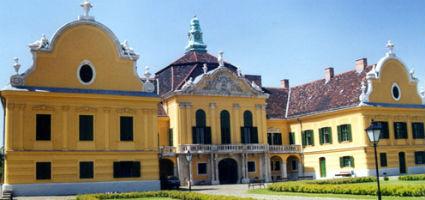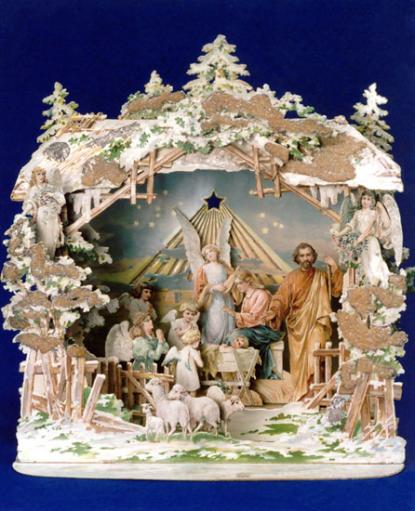2025. December 22. Monday
Castle of Nagytétény - Budapest
 |
The exhibition has closed for visitors.
2003.11.29. - 2004.01.04.
Museum tickets, service costs:
|
Ticket for adults
|
1500 HUF
|
|
|
Ticket for students
(6-26 years of age, on presentation of a pensioner card or ID)
|
800 HUF
|
|
|
Ticket for pensioners
(62-70 years of age,valid for the permanent exhibition)
|
800 HUF
|
|
|
Ticket for families
(2 adults + their children, valid for the permanent exhibition)
|
3000 HUF
|
/ family
|
|
Program ticket for adults
|
1800 HUF
|
|
|
Program ticket for students
|
900 HUF
|
|
|
Program ticket for families
|
3500 HUF
|
|
|
Program ticket
|
800 HUF
|
|
|
Program ticket
|
500 HUF
|
|
|
Program ticket for pensioners
|
900 HUF
|
|
|
Photography
|
400 HUF
|
|
|
Video
|
1000 HUF
|
|
|
Wedding photographs
(on prior notice)
|
15000 HUF
|
In the hall of the baroque mansion in Nagytétény an exhibition connected to Christmas relics is opened. Besides the old Christmas tree ornaments and candlesticks, pictures of saints, paper Bethlehem, Christmas greeting cards, envelops and boxes - from between 1870-940 - are exhibited. And this is all from the collection of the Applied Art Museum of Budapest.

Do we ever think of when the first Christmas tree was erected and what symbols this celebration has? The former Roman Saturnalias turned into the magnificent feast of the Savior of Bethlehem. Jesus has brought the ancient gospel of humane love.
The barn of Bethlehem and the Christmas tree is tightly connected to the celebration. The custom of erecting the tree is of German origin: Martin Luther himself thought it important to erect the tree. Sebastian Brant: Narrenschiff at the end of the 15th century remembered the first Christmas tree erected in Strasbourg. The first picture (engraving) of a tree ornamented by stars and candles were made in 1509.
The tree itself and all we put on it have their significant symbols. The green tree is a symbol of life and fertility. Goethe writes about a wonderful tree glittering from candles, sweets and apples. The candle is a symbol of the light brought into the world by Christ who was the light of the world. Light is a symbol of life.
The apple reminds us of the Paradise, and the paradise-like character of Christmas. Its place later was filled by the endless globes as symbols of eternity. Their forms expressing perfection. Walnut is a symbol of Christ. Its green peel refers to the biter suffering of Christ, its seed refers to the divinity of Christ. The star placed on the top of the tree recalls the wonder of the Bethlehem star.
From Germany the Christmas tree spread over the whole of Europe. In Hungary it was the protestant mother of Frigyes Podmaniczky who first introduced the custom here, too. (Erzsébet Nostitz /1788-1853/). However, it might not have been the first one, for Teréz Brunswick, the founder of the first Hungarian kindergarten, and Dorottya Mária, wife of chief count Joseph Habsburg erected Christmas trees.
By the second half of the 19th century the Christmas tree became a pleasing custom of the middle class. Children were all happy about that. The toy industry produced numerous ornaments which were advertised in ads and newspapers.

Do we ever think of when the first Christmas tree was erected and what symbols this celebration has? The former Roman Saturnalias turned into the magnificent feast of the Savior of Bethlehem. Jesus has brought the ancient gospel of humane love.
The barn of Bethlehem and the Christmas tree is tightly connected to the celebration. The custom of erecting the tree is of German origin: Martin Luther himself thought it important to erect the tree. Sebastian Brant: Narrenschiff at the end of the 15th century remembered the first Christmas tree erected in Strasbourg. The first picture (engraving) of a tree ornamented by stars and candles were made in 1509.
The tree itself and all we put on it have their significant symbols. The green tree is a symbol of life and fertility. Goethe writes about a wonderful tree glittering from candles, sweets and apples. The candle is a symbol of the light brought into the world by Christ who was the light of the world. Light is a symbol of life.
The apple reminds us of the Paradise, and the paradise-like character of Christmas. Its place later was filled by the endless globes as symbols of eternity. Their forms expressing perfection. Walnut is a symbol of Christ. Its green peel refers to the biter suffering of Christ, its seed refers to the divinity of Christ. The star placed on the top of the tree recalls the wonder of the Bethlehem star.
From Germany the Christmas tree spread over the whole of Europe. In Hungary it was the protestant mother of Frigyes Podmaniczky who first introduced the custom here, too. (Erzsébet Nostitz /1788-1853/). However, it might not have been the first one, for Teréz Brunswick, the founder of the first Hungarian kindergarten, and Dorottya Mária, wife of chief count Joseph Habsburg erected Christmas trees.
By the second half of the 19th century the Christmas tree became a pleasing custom of the middle class. Children were all happy about that. The toy industry produced numerous ornaments which were advertised in ads and newspapers.
